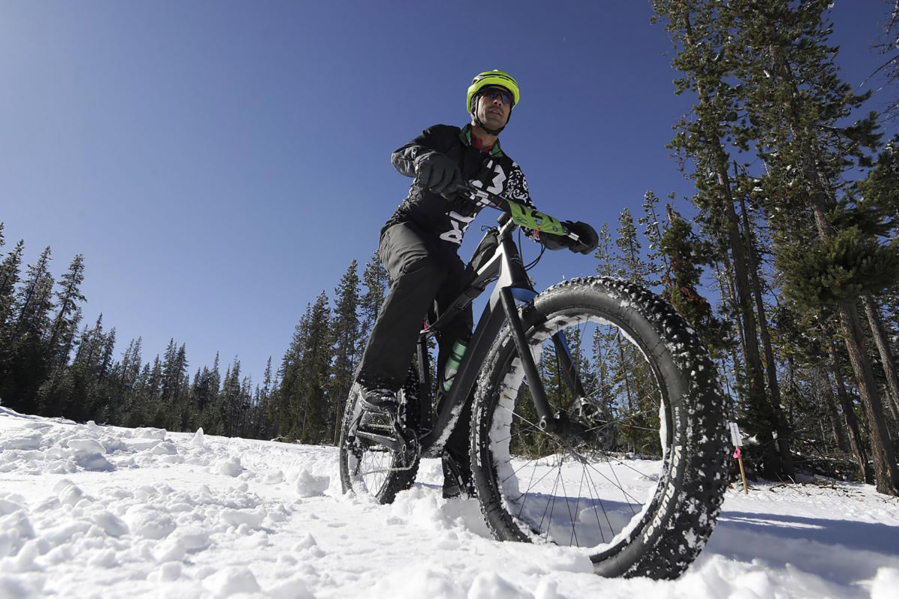BEND, Ore. — Even when snow covers the ground all throughout Central Oregon, mountain biking season rolls on.
Fat bikes give mountain bikers the ability to ride through snow on singletrack trails through the winter.
The bikes’ wider tires (typically 3.8 to 5 inches wide versus 2.25 inches for standard mountain bike tires) allow for better traction in snow, but fatbikes typically perform better on packed-down snow than on several inches of fresh powder.
The groomed fatbiking trails at Wanoga Sno-park west of Bend include a couple different loop options, as the Central Oregon Trail Alliance has a winter grooming permit from the Deschutes National Forest.
Fatbikes are also allowed on snowshoe trails and groomed snowmobile trails in Central Oregon, but they are prohibited at nordic ski areas such as Meissner Sno-park and the Mt. Bachelor Nordic Center.
Gary Meyer, a volunteer for the Central Oregon Trail Alliance who first started riding bikes on snow in the 1980s, has been in charge of grooming the snowy singletrack for fatbikers the last few years at Wanoga Sno-park.
Meyer pulls a rolling groomer behind a snowmobile to groom about 10 miles of snowy singletrack for fatbikers at Wanoga.
The trails include a 6.2-mile loop and a 3.5-mile loop, and conditions updates on the groomed trails can be found at bendtrails.org. Snowshoers and cross-country skiers are allowed on the trails as well, which start near the sledding area. Fatbikers are asked to stay on the snowshoe loops and off the ski loops.
Fatbikers, snowshoers and cross-country skiers have all been enjoying the plentiful snow conditions for the past three weeks at Wanoga, Virginia Meissner and Swampy Lakes sno-parks, all west of Bend.
Meyer began grooming fatbike trails at Wanoga in the winter of 2013-14, and the sport has steadily increased in popularity over the last few years in Central Oregon. Most of the bike shops in the area now sell and rent fatbikes.
Tire pressure can be as low as 3 or 4 pounds per square inch on fatbikes — mountain bikes are usually between 30 and 50 psi — to provide even more traction on challenging terrain.
Fatbikes are capable of ripping through about 2 to 3 inches of fresh snow. Anything deeper than that becomes extremely difficult, according to Meyer. Groomed trails give fatbike riders a firmer surface to avoid sinking into the snow.
Snowshoe loops at Swampy Lakes Sno-park and near Todd Lake are popular among fatbikers. Sometimes cyclists will ride along regular snow-covered mountain bike trails to pack the snow down and make them more ridable for others.
Many fatbikers ride the Phil’s Trail network or other areas near Bend when the trails are covered in snow, but the groomed trails give them an area to ride where they know the snow conditions will be more consistent.
Novice fatbikers need some time to get accustomed to the unstable surface of the snow, as fatbiking requires a bit more balance control and steering control. Climbing is also more difficult on a fatbike, as the snow creates more friction and the rider is moving a bigger chunk of rubber.
Despite the challenges, fatbiking remains a popular outdoor recreation alternative during a snowy Central Oregon winter.



